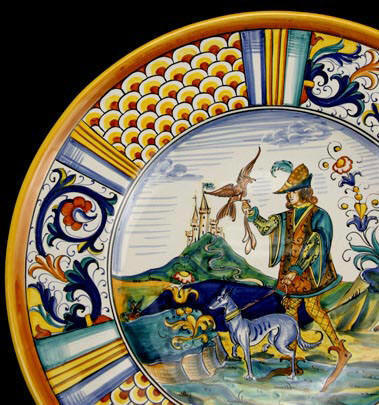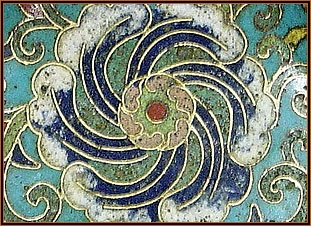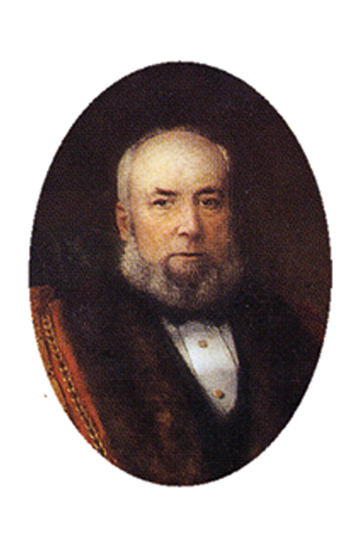A word has come to light lately to describe the way in which words, thoughts and ideas are brought about throughout society.
The word “meme” refers to an idea that spreads through a social organization the way a virus spreads through a community.
Potters are like river otters, always eager to play so memes sweep easily through the pottery community.
A new idea takes hold of the potters imagination and suddenly it seems like everybody is excited and wants to do shino glazes, salt fuming or pit firing.
American style raku is a perfect example, one potter dropped a hot pot into a pile of vegetation and it turned black and before long everybody wanted to explore this exciting new way of playing with clay.
So many potters have become possessed by the raku meme that you can do raku all your life and never exhaust the possibilities.
Wheel thrown, low fire clay, burnished, bisque fired to cone 010, fired with horsehair and sprayed with ferric chloride.
A meme that recently started spreading is the technique of horsehair pottery, which is an off shoot of the raku meme.
Somebody accidentally found out that if you dropped horsehair onto a hot pot at just the right time it would leave a lovely frizzy black mark on the pot and everybody who sees it wants to try it.
OLD INDIAN TRICK!!
Myself, I believe that the horsehair technique was stumbled upon and made popular by one of the Indian tribes.
As the Indian maid was taking pottery out of the fire pit, some of her long hair fell upon the hot pottery and burned a black trail into the pottery.
They were smart enough to try hair from the tail and mane of their horses as well as other animals.
They were selling this type of pottery long before the white man figured it out.
Below is the white man’s horsehair technique for the following photographs.
Start with a very simple round thrown or poured piece of pottery or ceramic made from low fire clay, with a small opening to reduce the chance of cracking and increase the amount of surface area for the horsehair to decorate.
Since the low fire clay is very smooth, unlike raku clay, it is more likely to crack when it is removed from the raku kiln.
Throw or pour the pottery or ceramic to a medium thickness and trim off every bit of excess clay.
Sand and burnish the pottery or ceramic when it is bone dry and then bisque fire it to Cone 010.
The basic firing technique is very simple.
Take burnished pottery or ceramic, put it in a raku kiln and heat it up to about 1400°F or so.
Take it out of the raku kiln and drop the hairs onto it one at a time until you’re satisfied with the resulting pattern of marks.
When it’s cool enough to handle, brush off the carbonized bits of hair and you’re done.
If you don’t like it, you can always reheat it and try it again.
For a little extra pizzazz, try spraying the hot pottery with ferric chloride to make it orange or drop a bit of paper inside to blacken the interior while you’re embellishing it with hair.
The horsehair technique can also be used on pottery or ceramic that has not been burnished, on textured surfaces or on pots partially covered with raku or low fire glaze.
The possibilities are unlimited, once you’ve conquered the first challenge of getting a supply of horsehair, you’re free to play and come up with your own unique style of horsehair pottery.
OK, here we go step by step!!
Burnishing Supplies:
- Bone dry pottery made from a low fire clay body.
- A couple of polished stones.
- A bottle of baby oil.
To prepare the pottery for burnishing, it is first sanded with very fine sandpaper.
Next, douse the pottery with baby oil and rub it in.
The oiled pottery is then dampened with a wet cloth.
The final step is to rub the entire piece of pottery with a polished stone.
It is then bisque fired to Cone 010.
Place the bisque fired pottery and a Cone 010 witness cone in the raku kiln and prepare to light the kiln.
After twenty minutes or so, the cone has melted, go ahead and remove the hot pottery from the kiln.
The hot pottery is then set on a brick and you can place hairs one at a time onto the pot.
As the hair touches the hot pot it sizzles, filling the air with the smell of burning hair and leaving a squiggly black line on the pot.
You can pull a few final hairs from the bunch to finish decorating this pot.
You can spray the pottery with ferric chloride to turn it orange.
Be sure and wear safety gear such as gloves, safety glasses, and respirator.
Ferric chloride can be purchased in crystal form from a scientific supply company, but you can buy it ready mixed from Radio Shack.
Since ferric chloride is caustic and destroys metal nozzles he uses a disposable canned air cartridge attached to a cheap plastic spray bottle instead of an airbrush.
The pottery is finished and you can brush off the residue of charred hairs with a soft hake brush.
WARNING:
Ferric chloride is caustic and produces toxic fumes when sprayed onto hot pottery.
It is also bad for the grass,notice the tarp on the ground.
TIP
Burnishing by dousing a bone dry pot with baby oil, dampening it, then rubbing it with a stone, works best with low fire high talc clay bodies.
Other low fire clays should work equally well.











